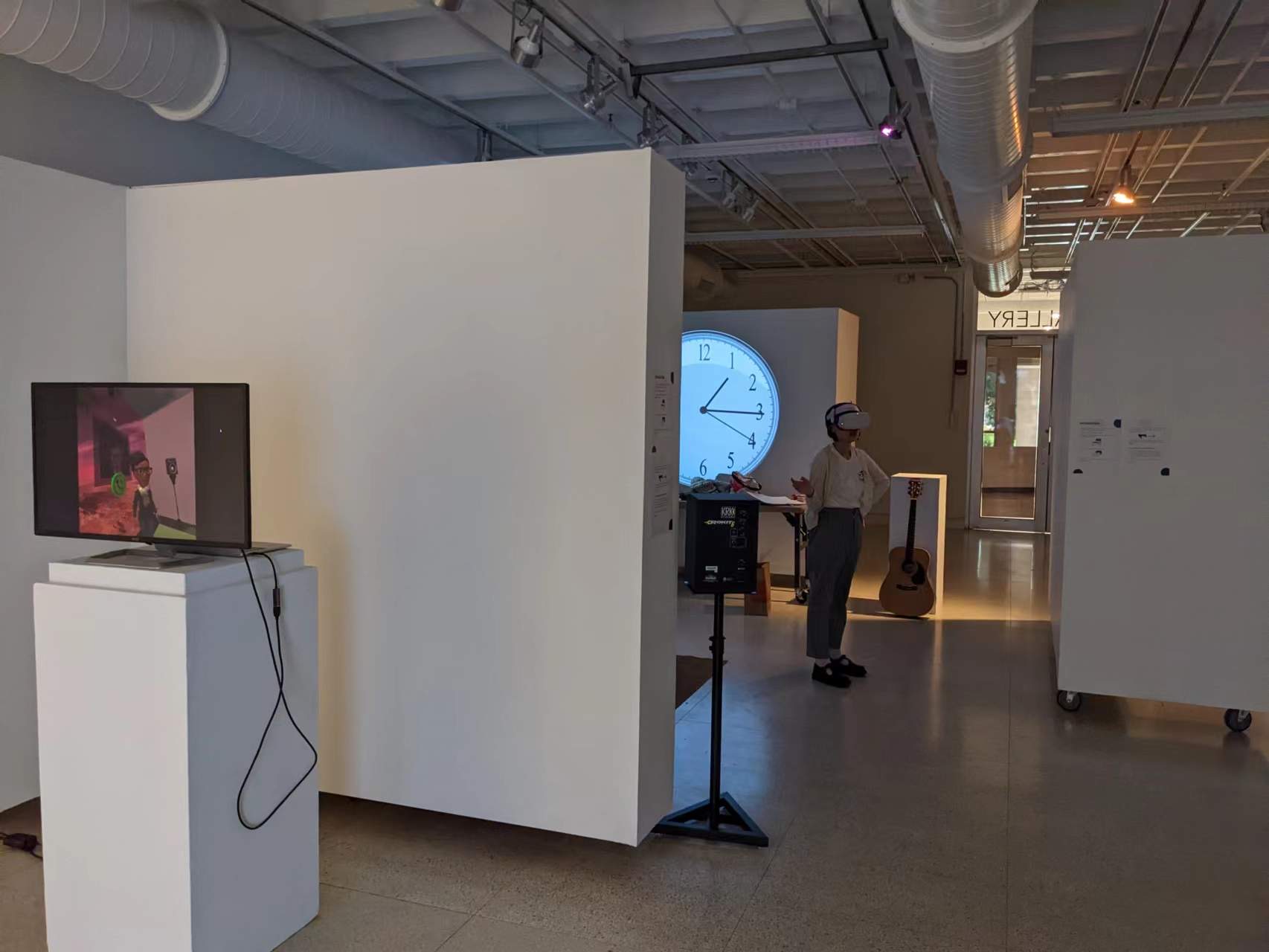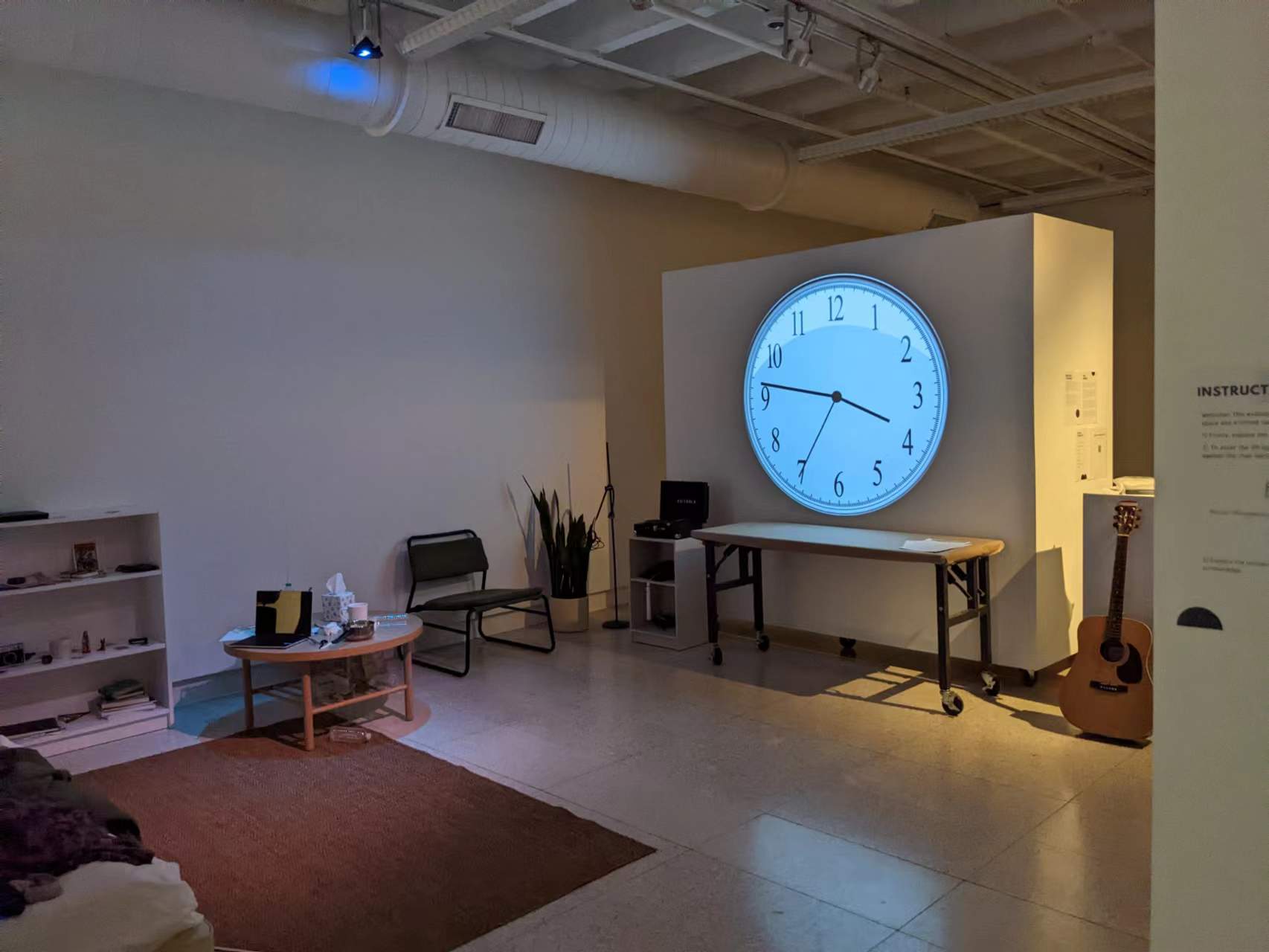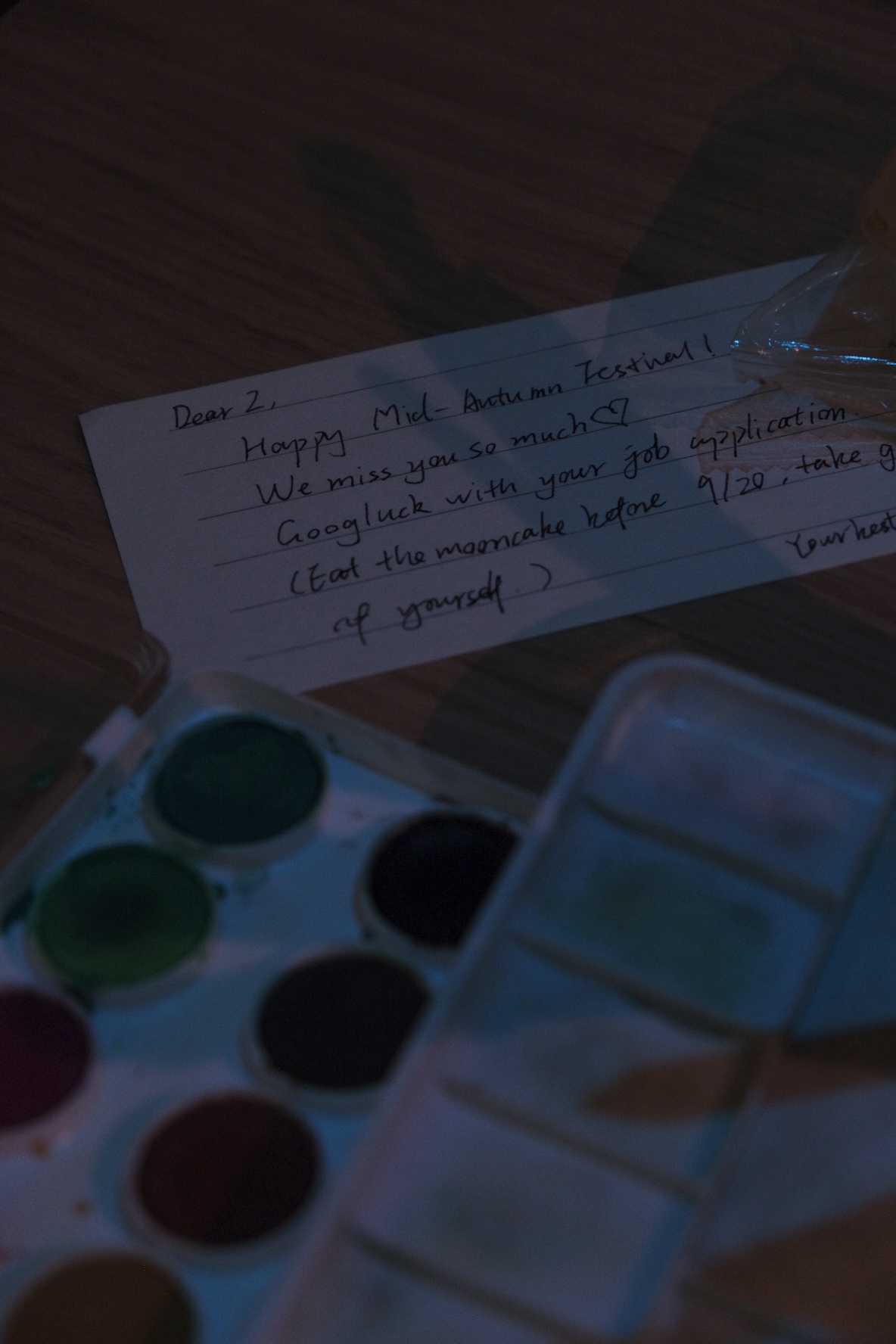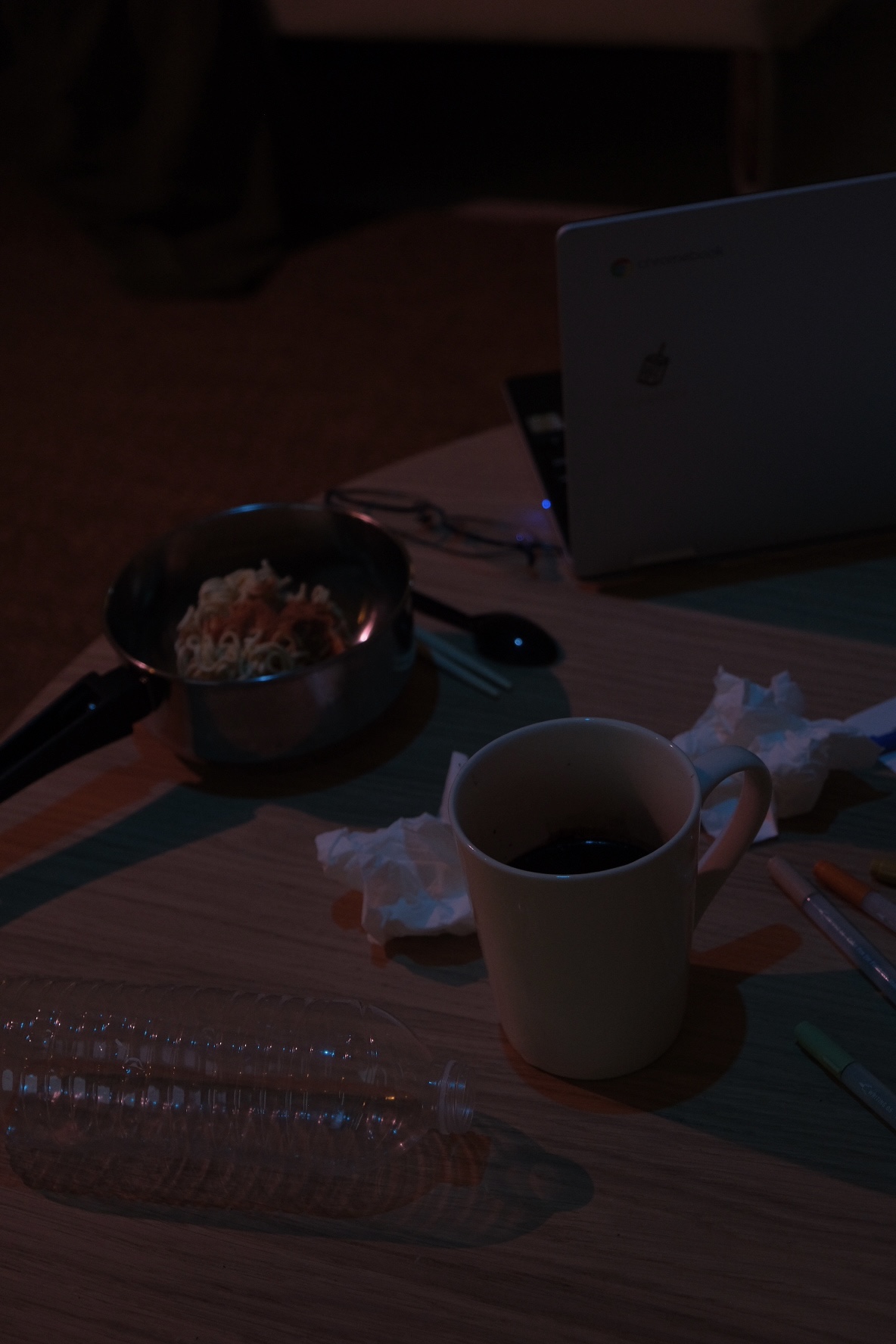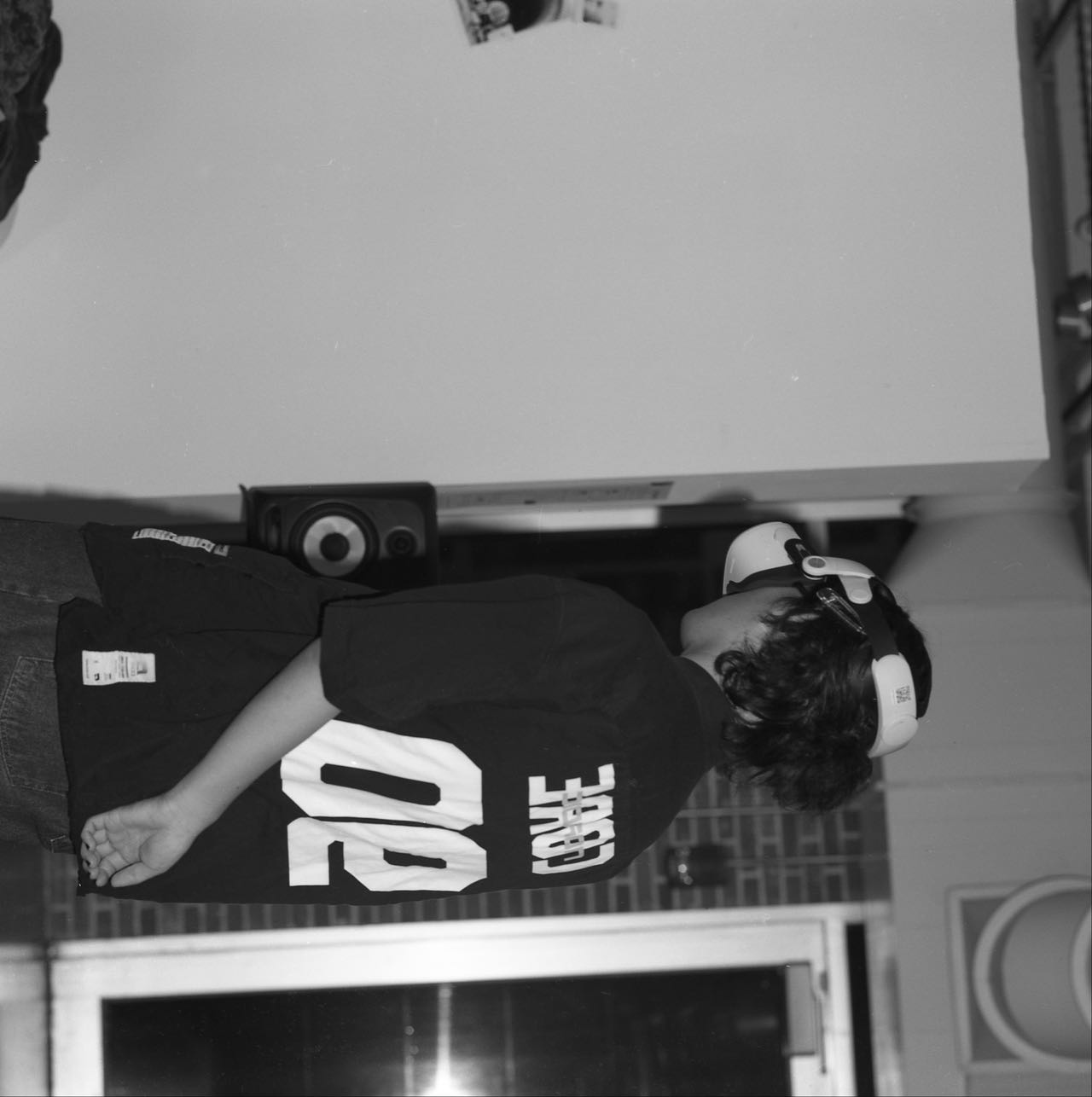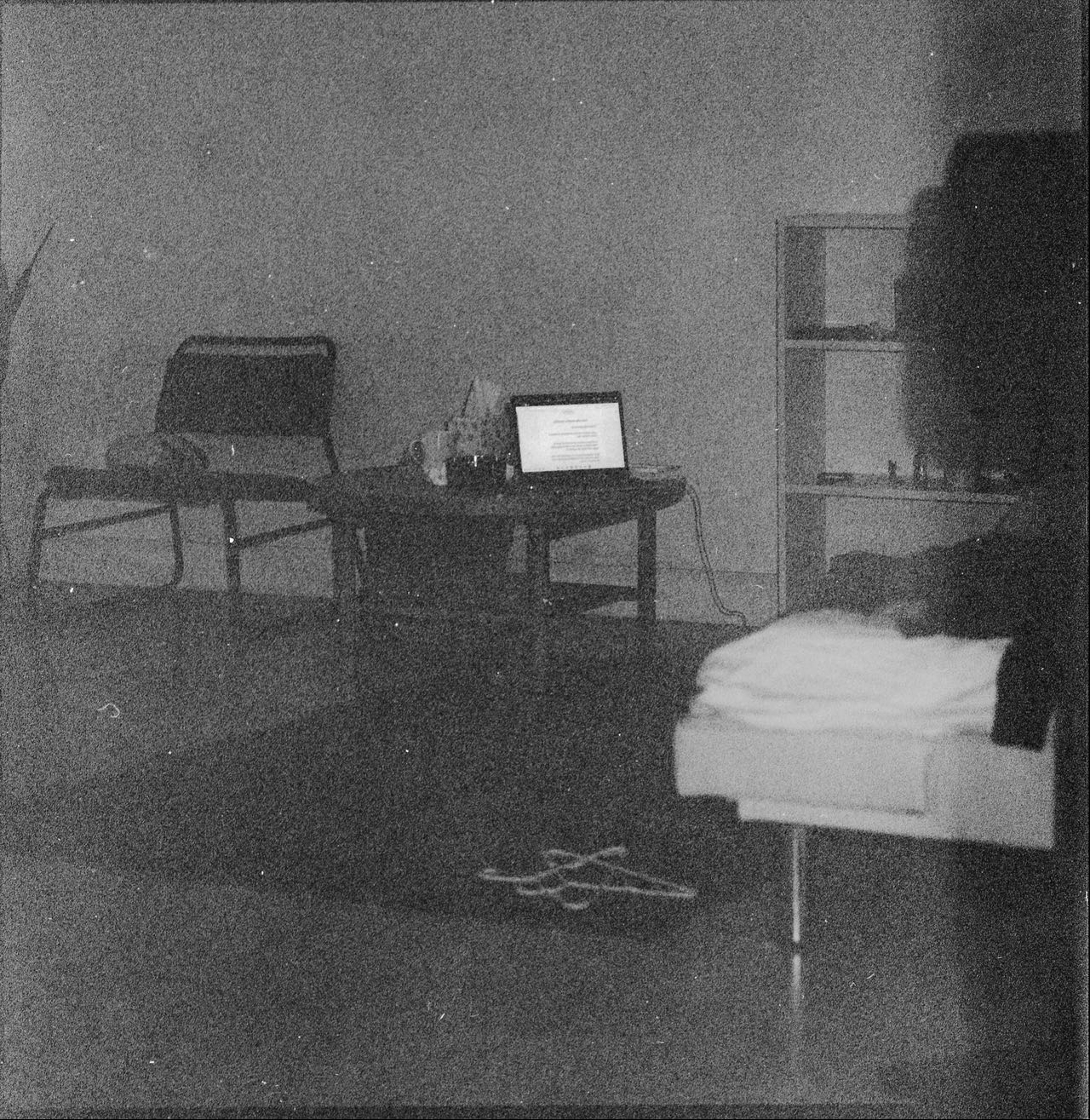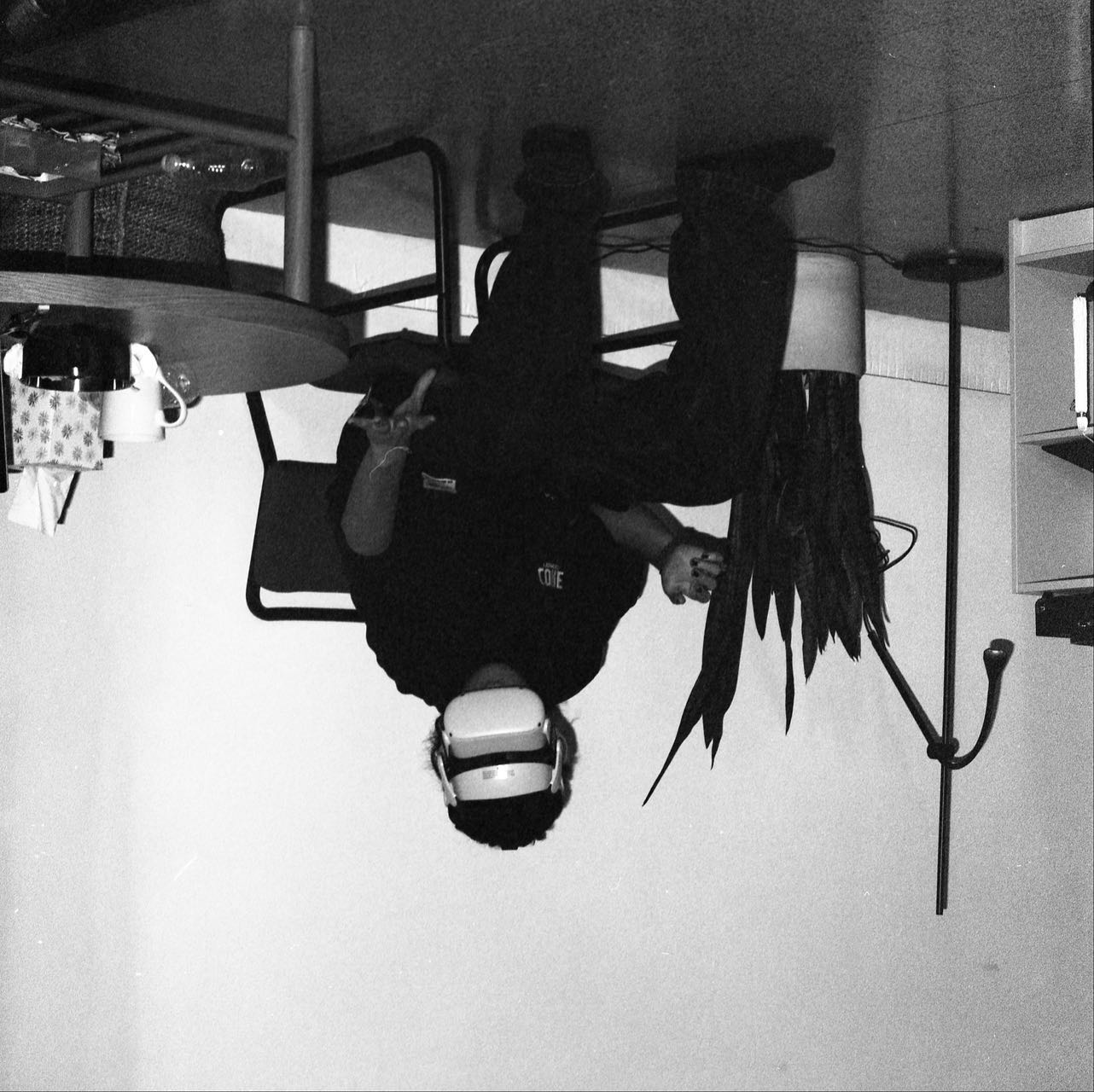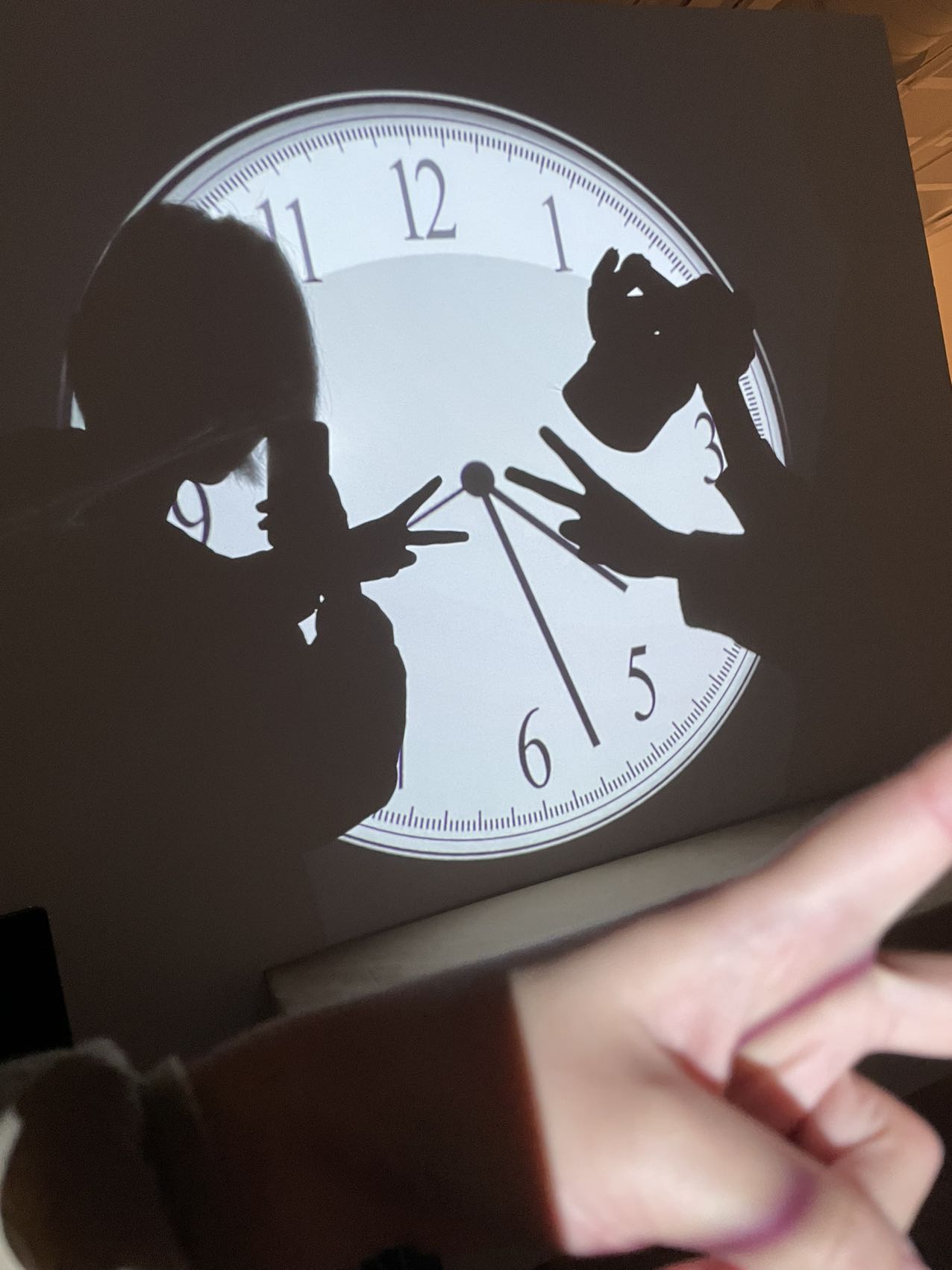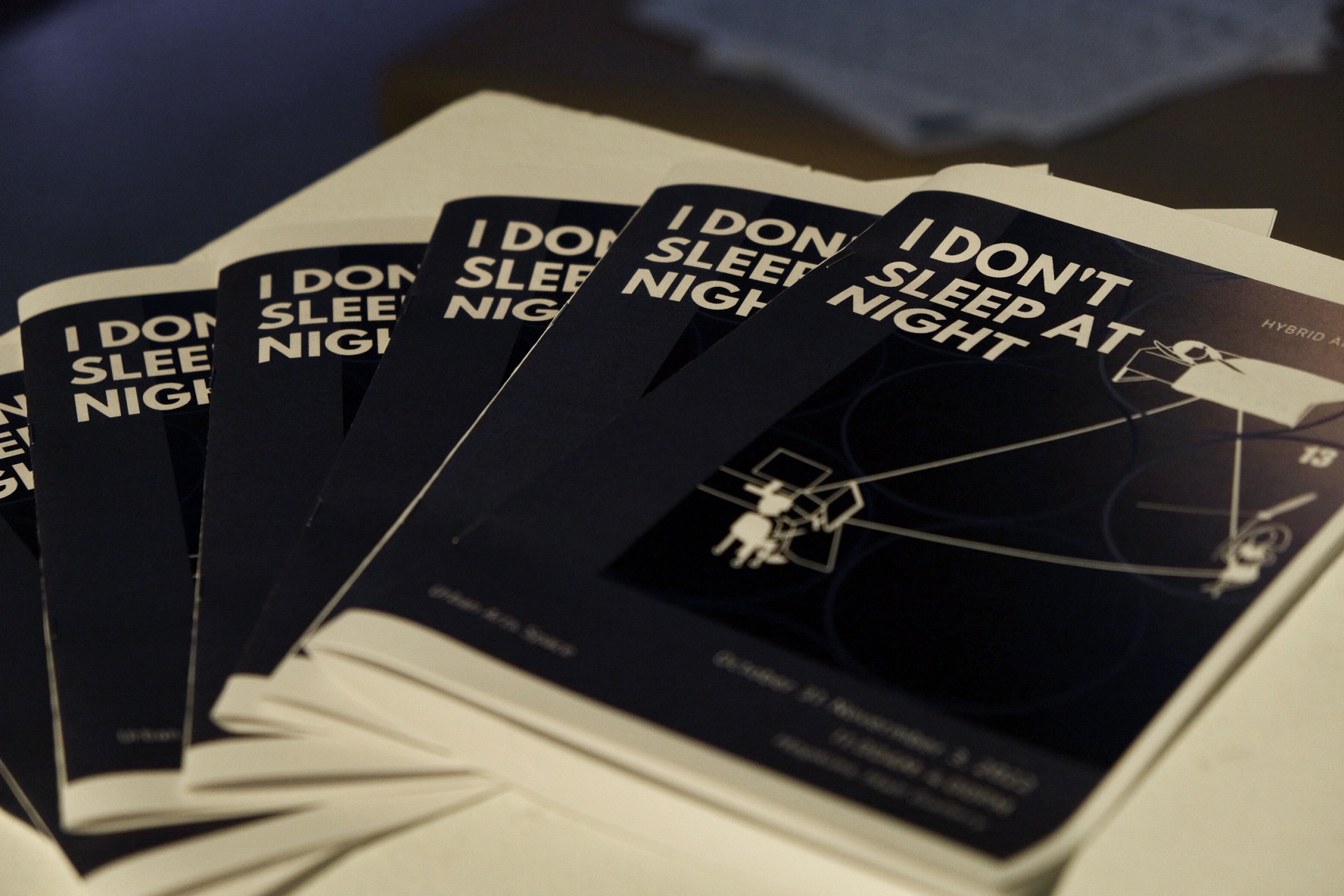
I Don’t Sleep at Night
Siming Lu, Annie Zhou, Shuai Xu, Changyue Su
🕑 OCTOBER 31 - NOVEMBER 3, 2022
📍 Hopkins Hall Gallery, Urban Arts Space, The Ohio State University

I Don't Sleep at Night is a multi-media installation that combines theater, game design, and virtual reality. Visitors are invited to enter a theatrically immersive living space of an individual with the sleep disorder. By interacting with the objects within the space, visitors can co-create the narrative of the room owner’s story. In the center of the room, a VR device serves as an entrance to guide visitors to a future world. In the future world, will humans still be living on a “24-hour cycle"? Is "daytime" really THE “daytime"?
Demonstration Video. Check out on YouTube to get some ideas.
Full Description: What is it all about?
thinking, scene, space
- I Don't Sleep at Night focuses on circadian rhythm sleep disorder. Starting from the personal experience of an individual with the circadian rhythm sleep disorder, the project creates an immersive space that invites the audience to experience it.
- The first scene explores the relationship between modern society and sleep disorders, and the second scene digs into the circadian rhythms and human sleep in a future world. Visitors are first introduced to a dark space. This space replicates the room of an individual with sleep disorders. We can see from the virtual window projection that it is nighttime in this space. The theme of this scene is "Your daytime is my nighttime. " People with circadian sleep disorders, contrary to most people, may wake up in the evening and are most active in the late hours of the night.
- In the center of this space, there is a table and a chair. A VR device is on the table. Visitors can sit in the chair and use the VR device. When they use the VR device, they can see the second scene: the future world, where the circadian rhythm would be artificially changed.
Sleep Disorder?
- Circadian rhythm sleep disorders (CRSDs) are characterized by clinically significant disturbances in the sleep-wake cycle that are caused by the misalignment between the internal circadian clock and the external environment (Zhu & Zee, 2012). Many factors could create this misalignment, such as light, physical activity, social behaviors, mental state, overall lifestyle, jet lag, and melatonin level, yet light is the most influential one (NIH, 2022; Zhu & Zee, 2012). Difficulties and disturbances with sleep can lead to various physical and mental problems (APA, 2015), therefore, it's worth directing more attention to CRSDs since in most cases, people indeed have a certain degree of agency over the onset and progression of the disorders.
Zhu, L., & Zee, P. C. (2012). Circadian rhythm sleep disorders. Neurologic clinics, 30(4), 1167-1191.
APA. (2015). Understanding mental disorders: Your guide to Dsm-5. American Psychiatric Publ.
NIH. (2022). Circadian rhythm disorders - what are circadian rhythm disorders? National Heart Lung and Blood Institute. Retrieved March 31, 2022, from https://www.nhlbi.nih.gov/health/circadian-rhythm-disorders
A clip of the “virtual world”
Inspiration: this is where we get started
I Don't Sleep at Night was inspired by Siming Lu's personal experience, and she would like to use this project to share the troubles and joys that sleep disorders bring her.
Stories behind
- During the winter break of her sophomore year, Siming was alone in the dormitory, and her sleep schedule gradually got disrupted. She would fall asleep after dawn and wake up in the late evening. She couldn't go out before the restaurants and stores closed, so she could only eat fast food. Also, because she was sleeping all the time during the day, she couldn't answer her friends' phone calls and messages in time and missed appointments. Finally, in a meetup, someone asked her whether she had a sleep disorder and she realized that it is probably an issue.
- It could go as far back to Siming's preschool days when she was usually required by her parents to go to bed at 9:00 PM, but she could be awake until 12:00 AM hearing adults talking outside her room. In her middle and high school years, she went to boarding schools. She had to follow a strict bedtime and get-up schedule there, but she was always unable to fall asleep shortly after the scheduled bedtime, so she would often get sleepy and lack energy during class. She did, however, have many wonderful experiences of late nights when she would do all the things that people do during the day: watching TV, reading, cleaning, cooking, eating hot pot, and dancing.
- When she was in China, she would get up in the evening, dress up in her colorful clothes, go out when the night began, and stay downtown when the city was at its busiest. Then she would walk home from the business district as the stores closed. The quiet streets late at night, the on-and-off traffic lights when there is no traffic, and the music in her headphones all together make a wonderful scene. Most of the time she didn't meet anyone else on her way home, but when she did, there were always interesting things happening. She could feel the fear rising up inside her heart when people were approaching, and she once was mistakenly recognized as a ghost and scared people away.
How does this project experiment with how art is imagined, made, viewed, or understood?
elements, character, design
- I Don't Sleep at Night incorporates many elements of immersive theater.
- The room's owner (the first scene) is a "character," and every detail in the room is derived from the character's unique characteristics, reflecting her lifestyle, hobbies, etc. The objects in the room serve as "props" that the audience can use to look through to understand the character's story and to co-create a unique narrative.
- In the second scene, we integrate game design and virtual reality technology to create a future world. Visitors enter this world from the first-person perspective. They could gain an understanding of the worldview by completing some small tasks and interacting with the scenery. Visitors are invited to experience how humans in the future world define the new circadian rhythm and how individuals are impacted.
Short Bios of collaborators:
Siming Lu
is a senior majoring in Arts Management at OSU. She started her creative journey from theatre and is expanding her storytelling interests to different media. As a playwright, her original works include: Monologues of n Women, Student Social Death Archive.
homepage: http://siminglu.com
Annie Zhou
graduated from OSU with a B.S. in Psychology in May 2021. Currently, Annie is working towards her Master's degree in Clinical Psychology at Teachers College, Columbia University. Annie is interested in mechanisms and treatments for mood and anxiety disorders as well as other psychological disorders (e.x. sleep disorders, eating disorders, and substance abuse disorders) that could evoke affective problems.
Shuai Xu
is a software engineer at Google and an amateur musician based in Columbus, Ohio. With previous programming experience in a 2d “Snake Game” project, Shuai is interested in exploring VR interaction developments with his technical skills. As a bedroom musician, Shuai loves to create music after midnight, the time when he feels most sentimental and can best use sounds to explore his moods and feelings.
Changyue Su
is an undergraduate Mathematics and Computer Science student from the University of Hong Kong. Interested in Computer Graphics, 3D software/engine, and Immersive Media, Changyue is keen on working in related fields. Changyue has some previous hands-on experience in Unity and is currently working on related projects.
homepage: https://sucy6.github.io/scytina6/
Special Thanks to
Claudia Wier (project supervisor)
Urban Arts Space
Yuchun He
Danny Zhang
Zexiao Ge
Alex Oliszewski
Dionne Custer Edwards
Tom Dugdale
